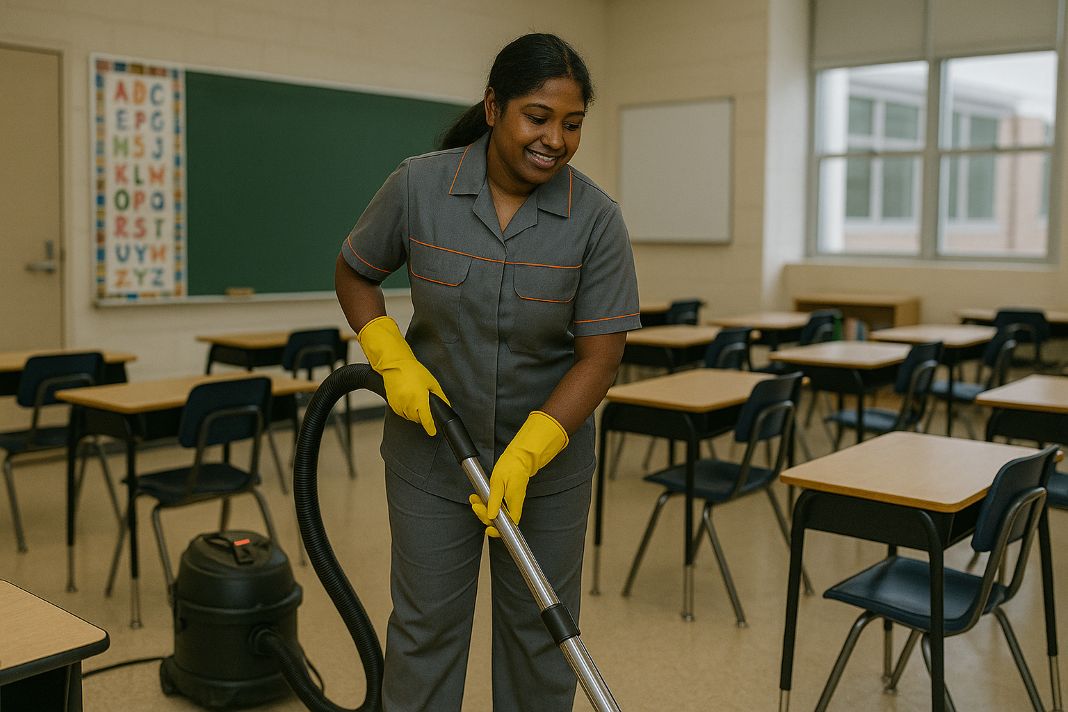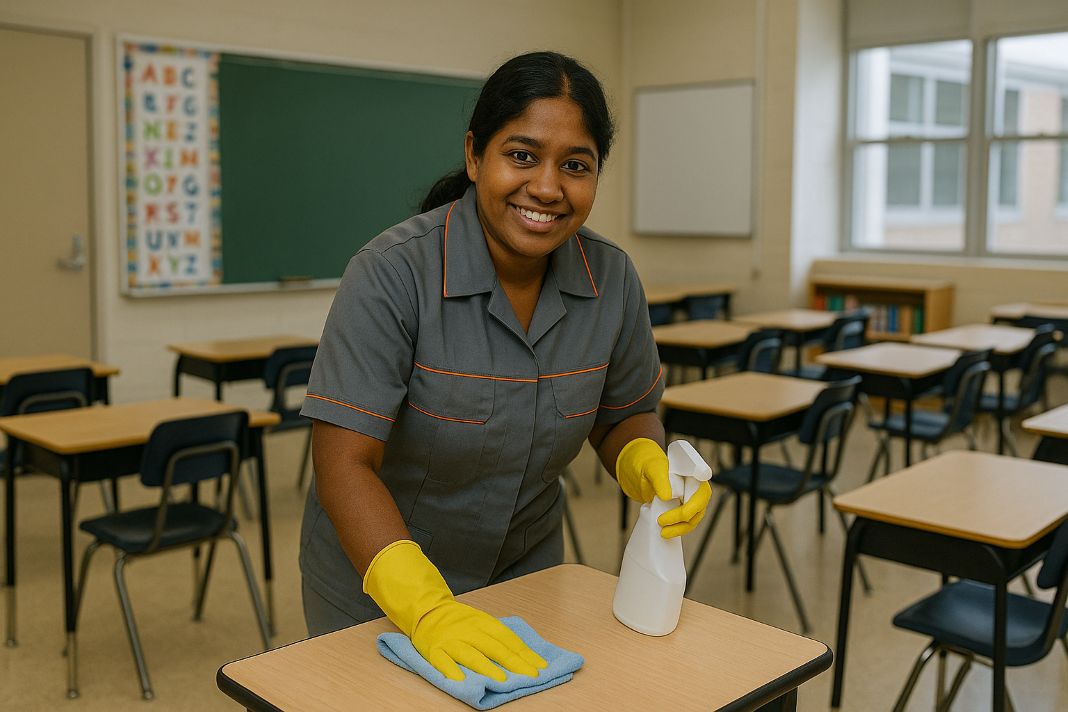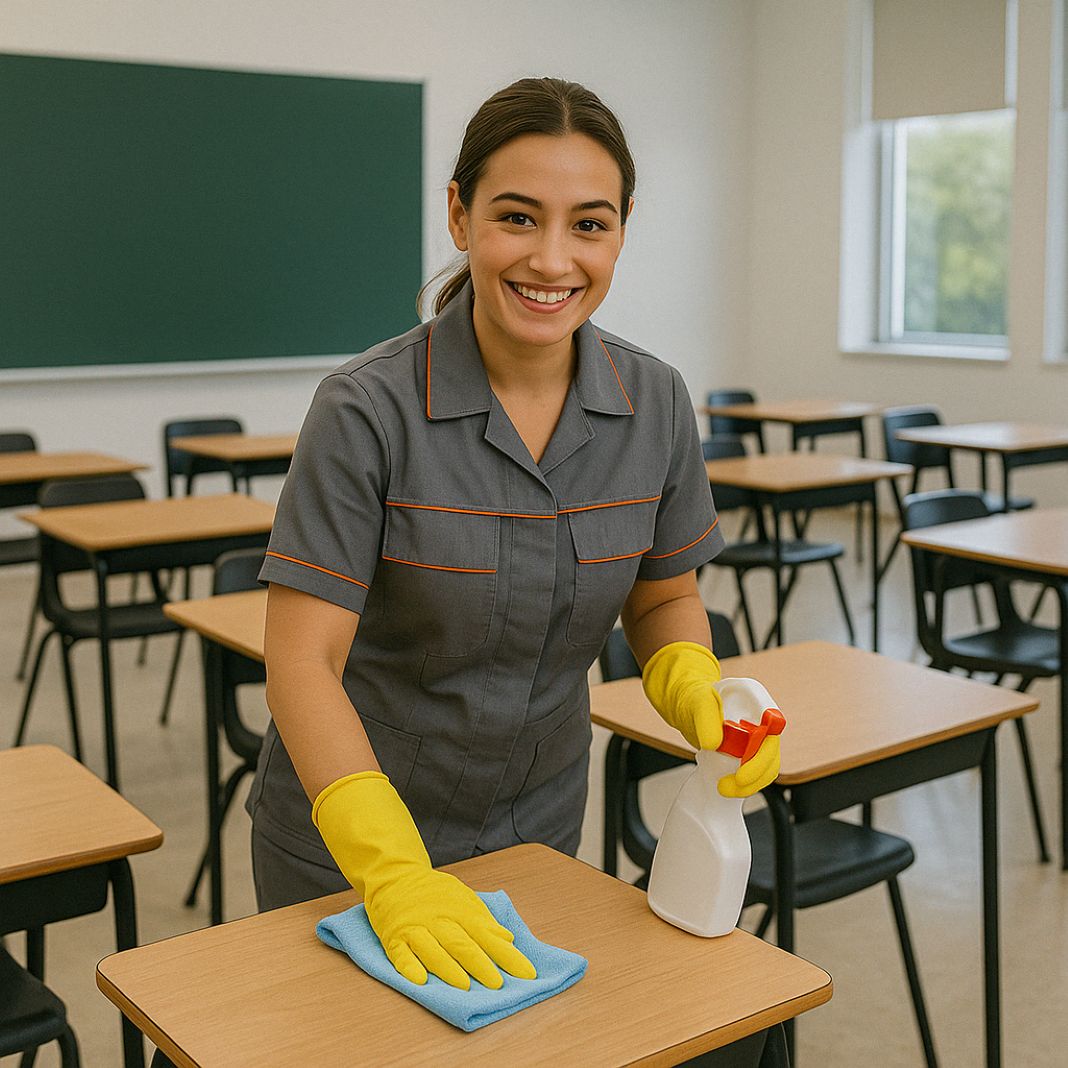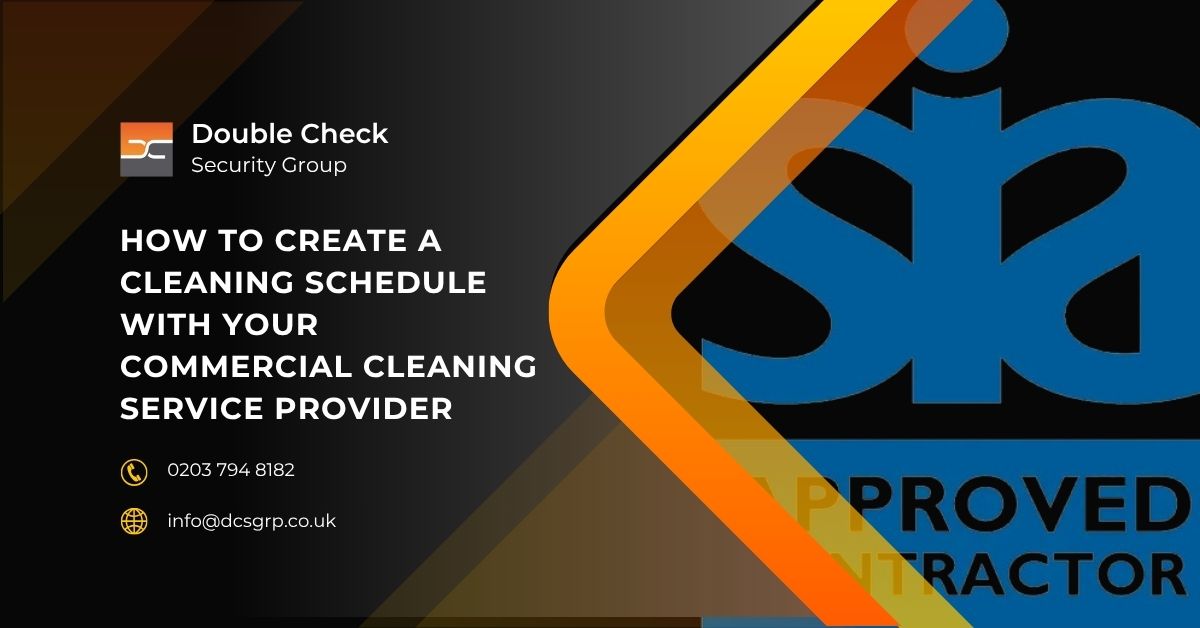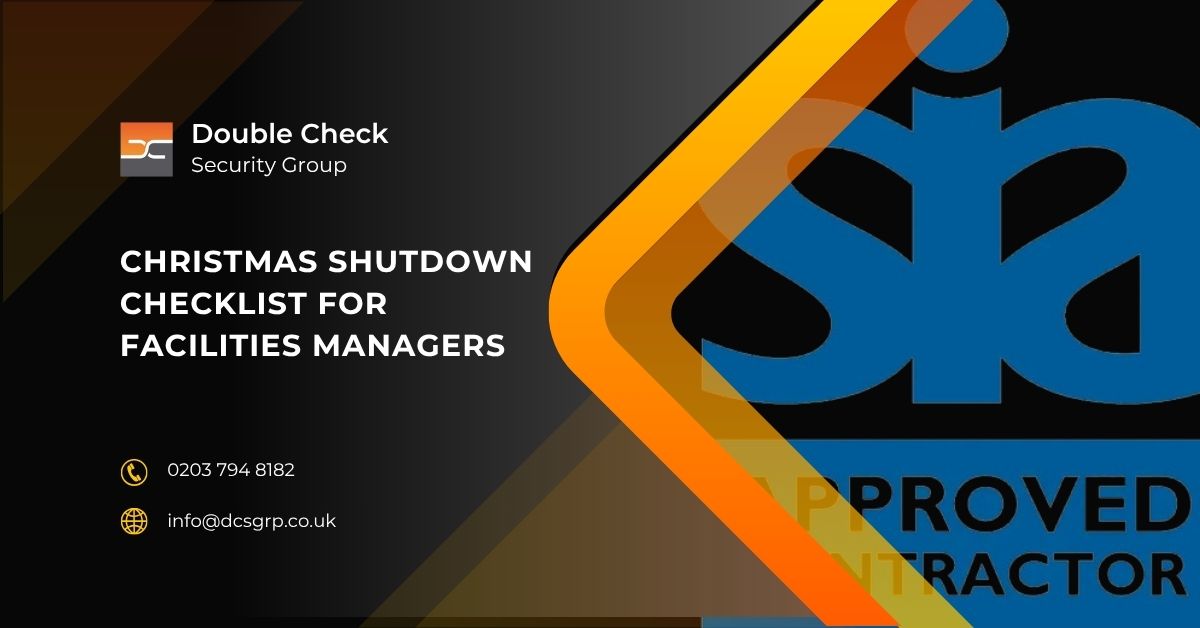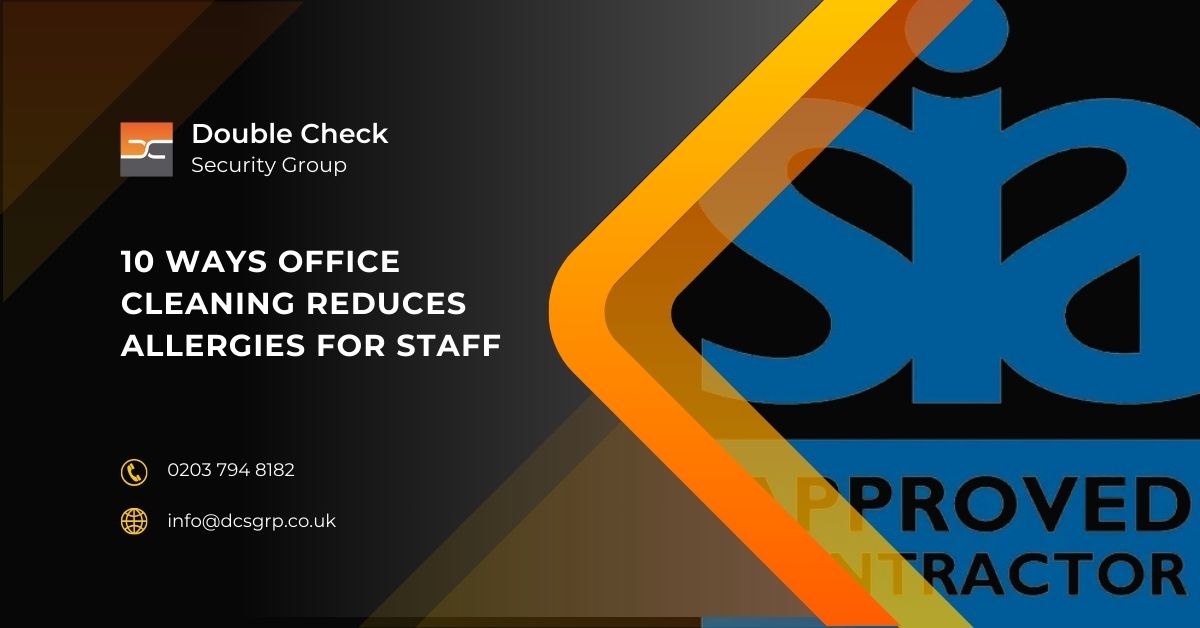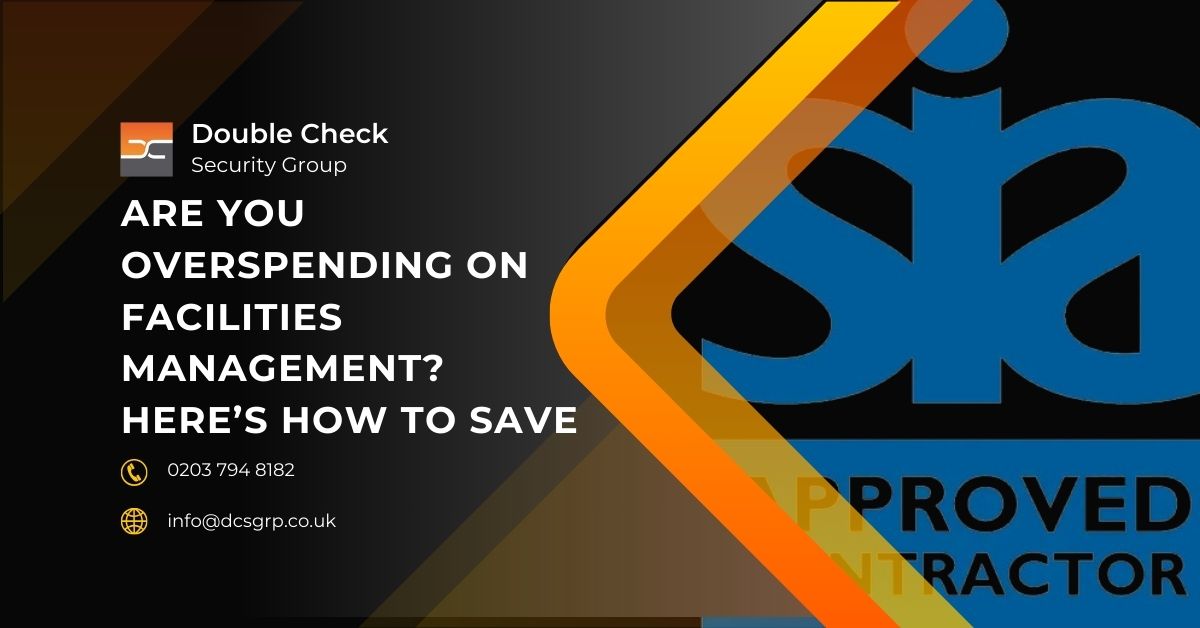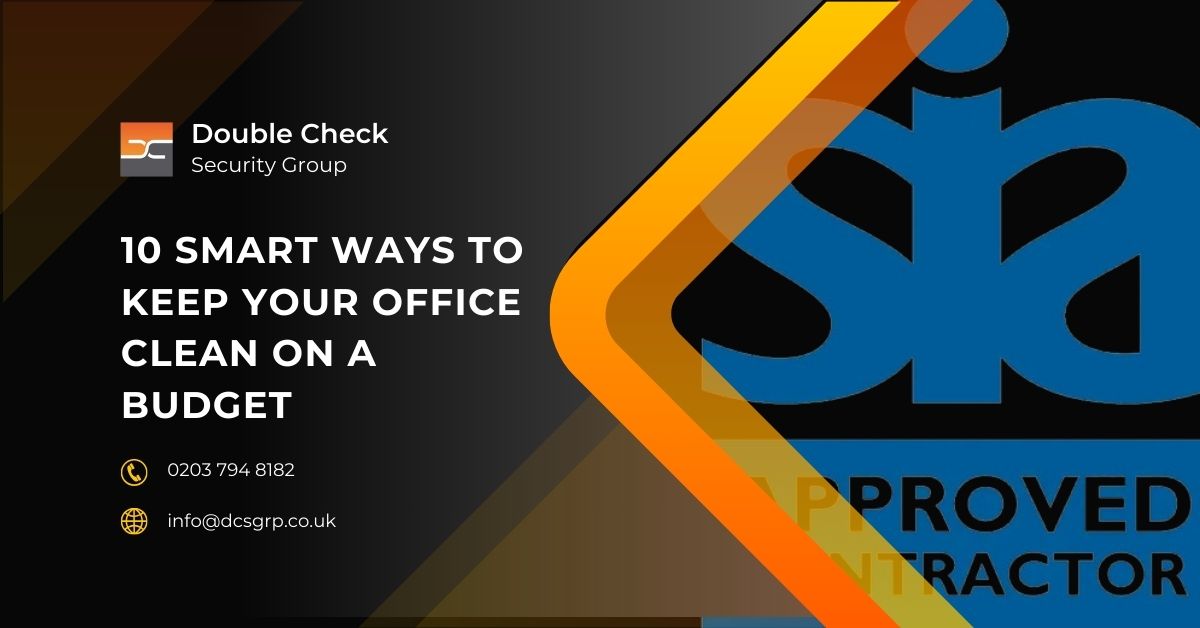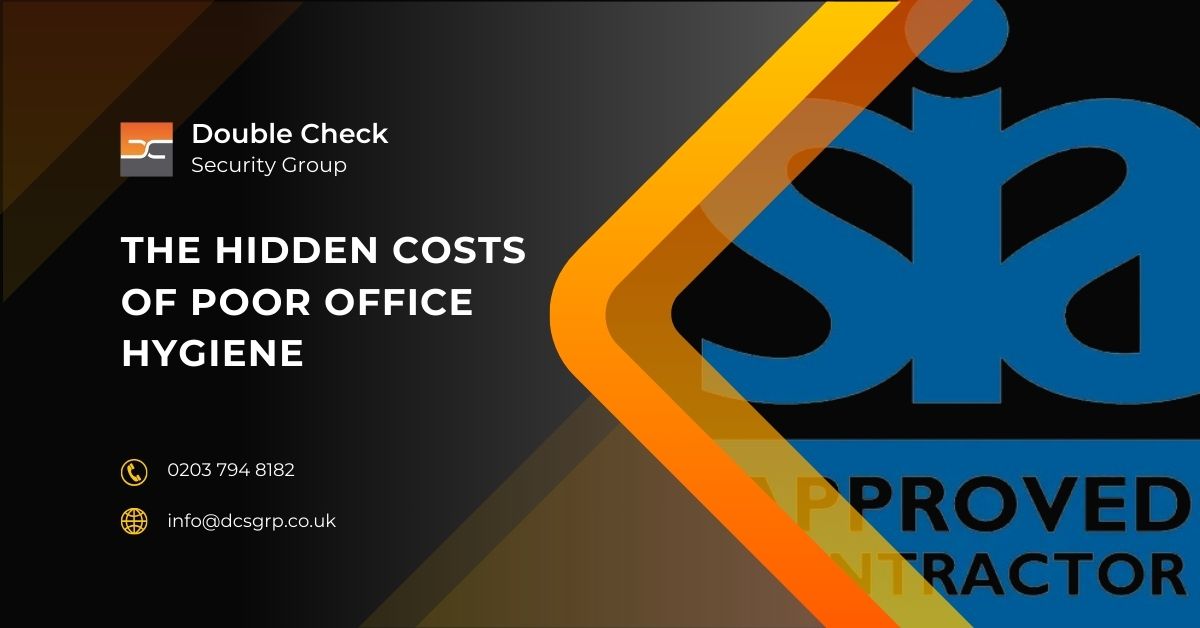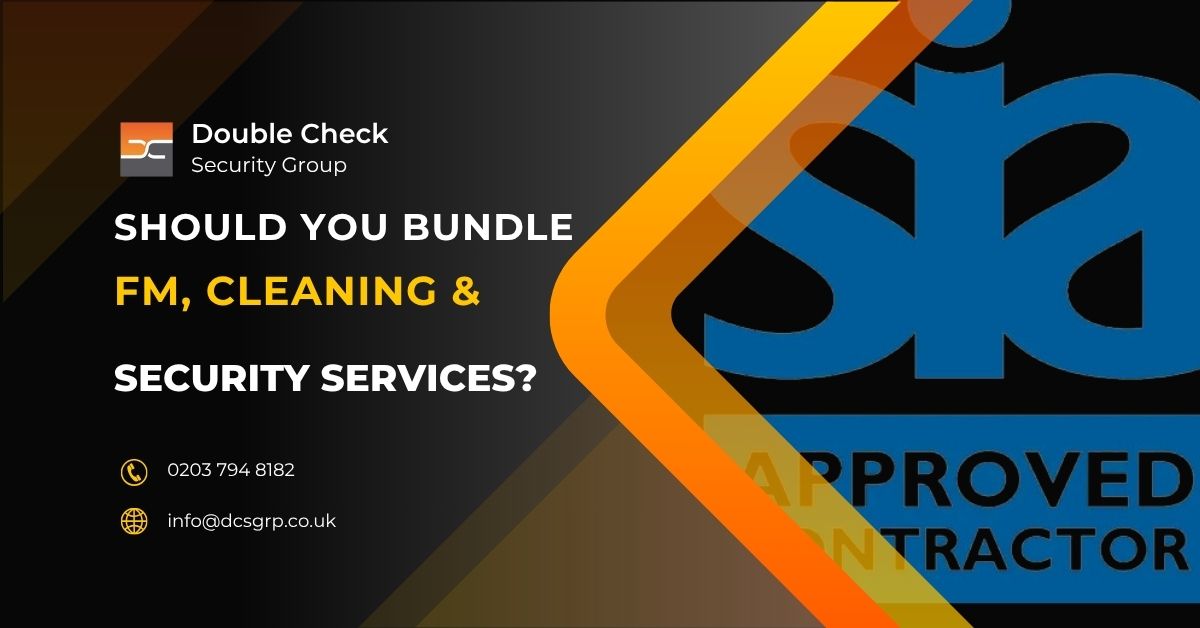Why is classroom cleaning important for schools in the UK?
Classroom cleaning directly affects pupil health, attendance, concentration and staff wellbeing. When maintained consistently, a hygienic learning space reduces the risk of infection, supports focus and helps create a calm and respectful atmosphere. For school leaders, it is a vital part of operational efficiency, safeguarding standards and educational outcomes. Clean schools also reassure parents and help build community trust.
What are the most common germ hotspots in schools?
Shared electronic devices
Classroom technology such as keyboards, tablets and shared smartboards are used frequently throughout the day. Without regular sanitisation, they become reservoirs for bacteria and viruses, contributing to cross contamination.
Toilet facilities and handwashing areas
Toilets and sinks must be disinfected regularly using cleaning agents compliant with EN1276 standards. In early years settings, these areas are especially sensitive as younger children are more vulnerable to infection.
Desks, chairs and touchpoints
Pupils and teachers touch surfaces constantly. If these are not sanitised daily, pathogens can spread quickly throughout the classroom.
Library corners and soft furnishings
Items such as cushions, rugs and reading materials gather dust and allergens, increasing the risk of respiratory irritation, especially for children with asthma or allergic rhinitis.
For advice on managing allergens in school environments, refer to our guidance on classroom hygiene and indoor air quality.
How does regular cleaning reduce absence rates?
School absence is a major concern for educators and parents. Routine and professional cleaning services significantly reduce the transmission of common illnesses such as flu, norovirus and conjunctivitis. Evidence from Public Health England shows that consistent disinfection of high contact surfaces can reduce pupil and staff sickness absence by up to thirty percent.
By limiting the spread of illness, cleaning not only improves attendance but also supports uninterrupted learning. Schools that demonstrate visible cleanliness also create more confidence for families and staff.
Request a Free School Cleaning Assessment
Find out how your school’s current cleaning routine compares to industry best practice. Get a no-obligation audit today.
What are safe and effective cleaning products for schools?
When choosing cleaning products for schools, it is important to balance efficacy and safety. Suitable cleaning agents include:
-
Biodegradable multi surface cleaners free from volatile organic compounds
-
Hydrogen peroxide based disinfectants that are safe for use around children
-
PH neutral floor cleaners that protect sensitive skin
-
Steam cleaning equipment for carpets and soft surfaces which avoids chemical residues
All products must meet BS EN1276 or BS EN14476 standards and comply with Control of Substances Hazardous to Health (COSHH) regulations.
How does a clean classroom improve learning outcomes?
Improved concentration and fewer distractions
A well organised, tidy classroom helps pupils stay focused. Reduced clutter and better air quality support cognitive function, especially in children with attention difficulties.
Better behaviour and engagement
Clean and structured spaces set the tone for expectations. Pupils tend to treat clean environments with more respect and are more likely to participate positively in class activities.
Reduced anxiety and better mental health
Clean classrooms contribute to a sense of order and calm, which reduces stress levels and improves pupil confidence. Teachers also benefit from improved morale and fewer distractions.
Explore more ways to support wellbeing through school maintenance by reading our guide on creating learning environments that support pupil health.
What is the difference between primary and secondary school cleaning needs?
Primary school cleaning priorities
Younger children interact more closely with surfaces and learning tools. Cleaning in primary schools should include:
-
Frequent wiping of craft supplies and shared play items
-
Sanitation of tables and floor mats after each session
-
Thorough cleaning of sinks and snack areas throughout the day
Secondary school sanitation focus
Older students use more specialist rooms, increasing the need for focused cleaning in certain departments:
-
ICT equipment and touchscreens in computer labs should be cleaned daily
-
Gymnasiums and sports equipment require antibacterial treatments after use
-
Laboratories must follow strict cleaning protocols to meet health and safety compliance
What should a classroom cleaning schedule include?
Daily tasks
-
Disinfect desks, light switches and handles
-
Empty bins and clean toilets
-
Mop floors using antibacterial products
Weekly tasks
-
Dust shelving and wall fixtures
-
Clean window sills and door frames
-
Vacuum behind and underneath furniture
Monthly tasks
-
Steam clean carpets and upholstered chairs
-
Wipe internal glass panels and vents
-
Deep clean skirting boards and storage areas
How can schools encourage pupils to help maintain cleanliness?
Pupils are more likely to respect their learning environment if they are encouraged to take part in looking after it. Teachers can:
-
Assign classroom monitor roles for tidying and light cleaning
-
Display visual prompts and hygiene reminders
-
Reinforce routines such as wiping desks and organising belongings at the end of the day
How does air quality relate to classroom cleanliness?
Poor indoor air quality caused by dust, mould or pollen impacts learning by triggering asthma, headaches and tiredness. Schools can improve air quality through:
-
Regular vacuuming with high efficiency particulate air filters
-
Cleaning air vents every term
-
Using hypoallergenic materials where possible
Good air quality makes classrooms more comfortable and reduces fatigue. It also supports attendance and overall pupil health.
Why does cleanliness influence parent and inspector perceptions?
Clean classrooms reflect high standards in school leadership. Parents are more likely to feel confident when visiting a tidy, well maintained school. Clean spaces help build trust and are frequently mentioned in positive Ofsted feedback.
Schools that prioritise cleanliness also show responsibility for safeguarding and pupil wellbeing.
Why use professional school cleaning services?
Professional cleaning companies offer:
-
Staff trained in infection control and COSHH compliance
-
Commercial grade equipment for deep cleaning and disinfection
-
Reliable scheduling during school hours or holidays
-
Safer product use with evidence based procedures
Outsourcing cleaning allows schools to focus on teaching while ensuring hygiene standards are maintained consistently. To learn more about working with trusted contractors, see our advice on choosing a reliable school cleaning provider.
How can schools measure cleaning effectiveness?
-
Use checklists to track completed tasks
-
Gather feedback from teaching staff and support teams
-
Review illness trends and link them to cleaning records
-
Conduct termly quality inspections with clear performance goals
Regular reviews help identify areas needing improvement and show a commitment to continual school improvement.
How can schools make cleanliness part of daily culture?
Cleanliness should be part of school values and routines. This includes training staff, engaging pupils and setting high standards every day. Posters, assemblies and regular recognition help reinforce positive habits.
Clean schools support healthier, more focused learning and show care for everyone in the building.
Schools run better when classrooms are clean
Classroom cleaning is not just about appearance. It supports everything from attendance and behaviour to staff morale and school reputation. Consistent cleaning routines and expert support create better spaces for learning.
Double Check Security Group provides professional school cleaning services across the UK with safe, effective methods that keep classrooms ready for learning every day.
Frequently Asked Questions
How often should air vents be cleaned in classrooms? Every three to four months, or more often in urban areas or older buildings.
Which cleaning products are best for younger children? Plant based or hydrogen peroxide formulas with EN1276 certification are effective and less irritating for young skin and lungs.
Does cleanliness affect Ofsted outcomes? Yes. Cleanliness supports safeguarding and welfare judgments, which influence overall inspection results.
What is the best way to check if cleaning is working? Regular checks, audits and feedback from staff all help assess cleaning standards and highlight areas that need attention.
Can eco friendly cleaning products still disinfect properly? Yes. Many meet the same standards as chemical disinfectants and are safer for children and the environment.
Talk to an Education Cleaning Specialist
Not sure where to start? Speak with a member of our experienced team and find out how we can help your school.

